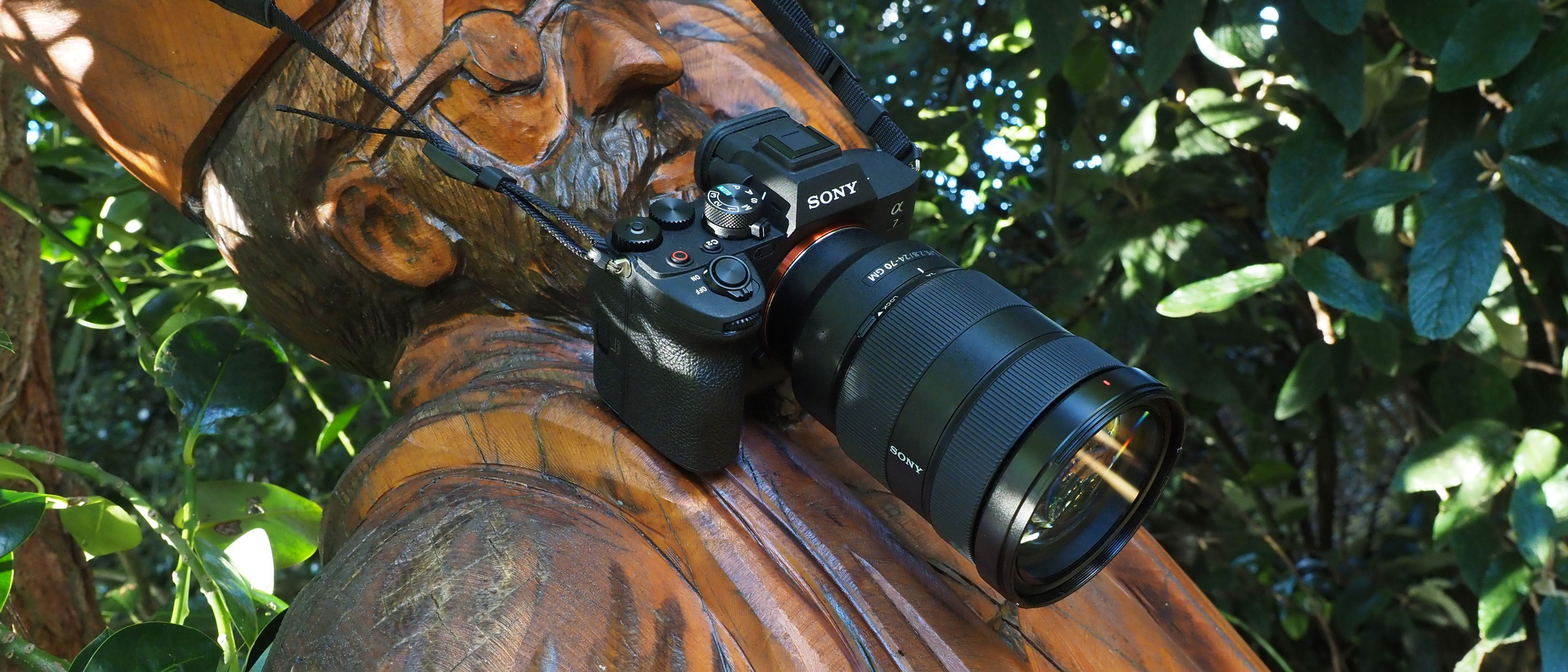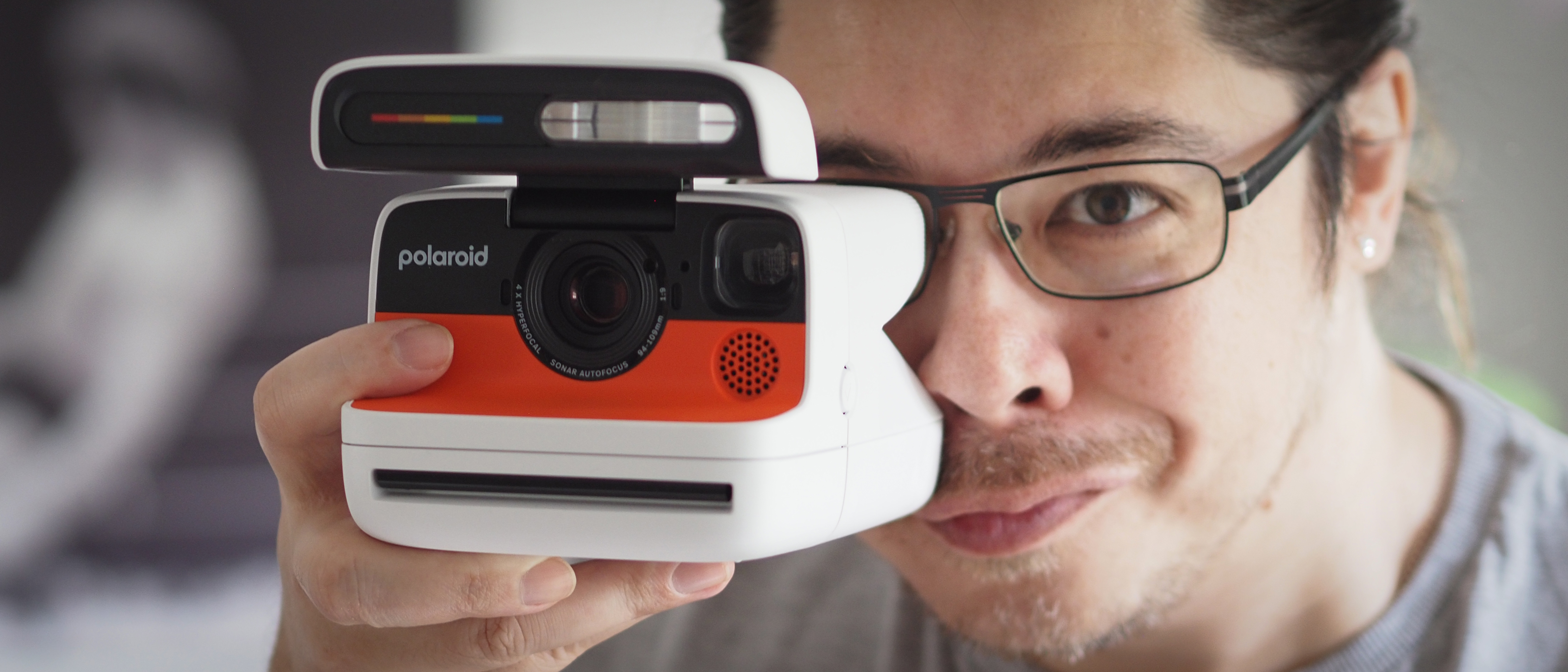Digital Camera World Verdict
Don’t think of the A7 IV as Sony’s new ‘entry level’ full frame mirrorless camera. It’s both too powerful, too complex and, yes, too expensive for that. It’s more like a mini-A1 that’s terrifyingly good at everything but less than half the price. Stills photographers can revel in its 33MP resolution and incredible burst mode, while videographers get a camera that leaves the previous A7 III far behind.
Pros
- +
Unprecedented buffer capacity
- +
10-bit 4:2:2 video and 4K 60p
- +
Super-responsive AF
- +
Extensive external controls
Cons
- -
Priced for semi-pros, not beginners
- -
Needs a fast card(s)
- -
Cropped S&Q mode
Why you can trust Digital Camera World
The Sony A7 IV signals a step up in ambition for Sony's ‘vanilla’ A7 model. Traditionally, the Sony A7 has been the range’s entry-level camera, with the ‘R’ models adding resolution and the ’S’ models adding speed/sensitivity. But there’s nothing ordinary about the Sony A7 IV, and while it does technically superseded the A7 III, it’s an altogether more advanced camera that, we think, targets a higher-level audience.
The Sony A7 III will continue for now and we have a Sony A7 IV vs A7 III article that spells out the differences. The Sony A7C will offer an additional ‘beginner’ option for the full frame Sony camera system going forward.
Specifications
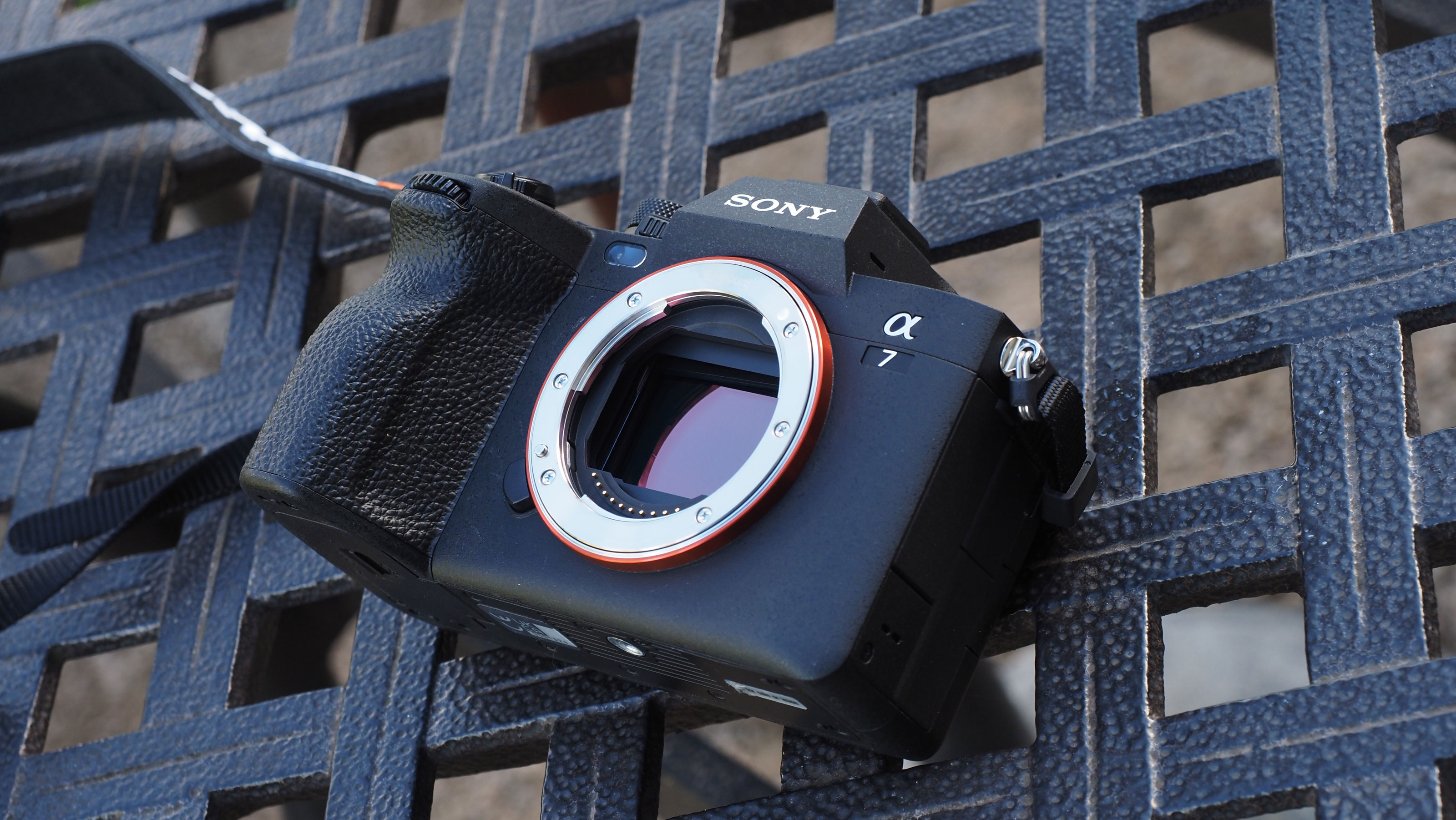
Sony model number: ILCE-7M4 (body only), ILCE-7M4K (with 24-70mm)
Sensor: 33MP full frame Exmor R CMOS
Image processor: BIONZ XR
AF points: 759-point hybrid phase/contrast-detect
ISO range: 100 to 51,200 (exp. 204,800 stills, 102,400 video)
Max image size: 7,008x4,672
Metering modes: Multi-segment, Center-weighted, Spot (Standard / Large), Avg, Highlight
Video: 4K 30p full width, 4K 60p Super35 crop
Viewfinder: 0.5 type Quad VGA OLED, 3.69m dots, 100% coverage
Memory cards: 1x CFexpress Type A/SD UHS-II, 1x SD UHS-II
LCD: 3-inch fully articulating touchscreen, 1.04m dots
Max burst: 10fps, up to 828 raw+JPEG (with CFexpress Type A card)
Connectivity: Wi-Fi, Bluetooth
Size: 131.3 x 96.4 x 79.8mm
Weight: 658g (with card and battery)
Key features
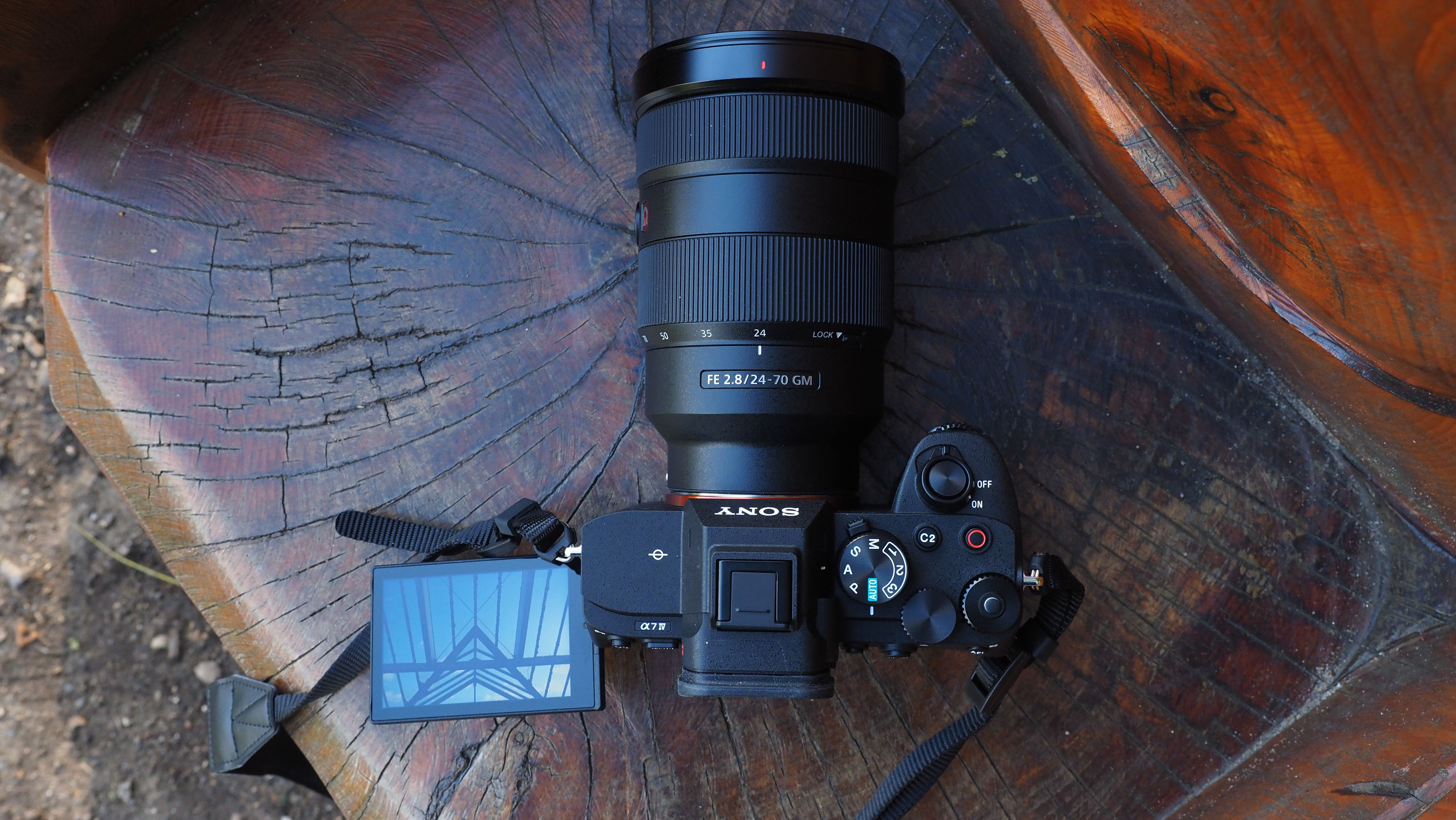
Where do we start? How about the sensor? The A7 IV’s new 33MP sensor is hardly headline news by today’s mirrorless camera standards, but it’s a big step up from the 24.2MP of the A7 III and A7C, and it puts a bit of distance between the A7 IV and powerhouse APS-C cameras like the Fujifilm X-T4.
And then there are the enhanced video features. Again, the A7 IV does not challenge the big hitters in the mirrorless video camera market, but it’s a big step forward from the A7 III. Its 10-bit 4:2:2 capture makes the Sony S-Log3 mode much more useful for color grading later, and while the 4K 60p capture does mean switching to Super35 crop mode, the A7 III couldn’t do 4K 60p at all (come to that, 4K 30p comes with a 1.2x crop factor on that camera, and only 25/24p 4K is full width).
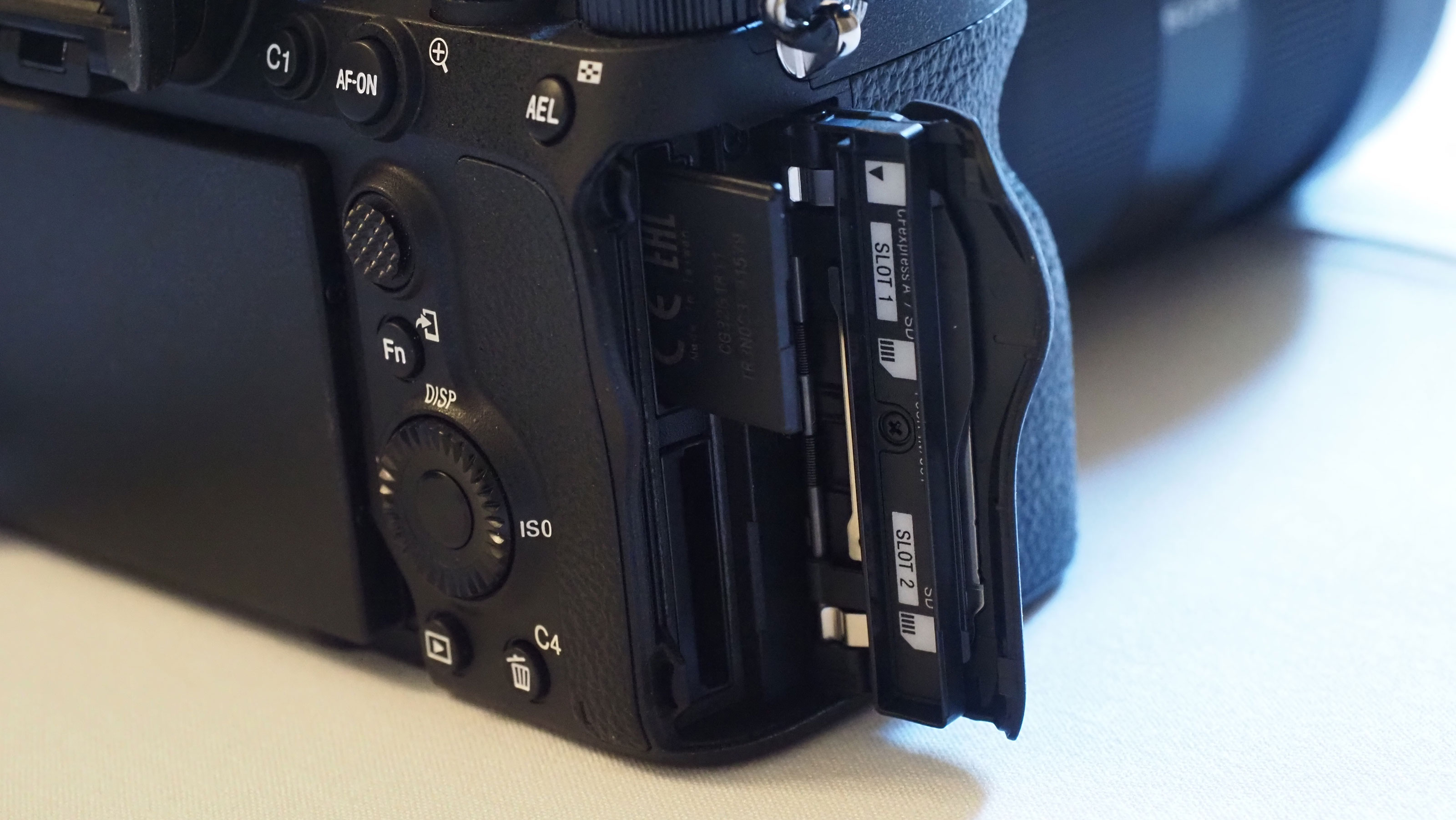
Perhaps the most spectacular advance, however, is the least obvious. The A7 III brought 10fps continuous shooting and an above-average buffer capacity for a general-purpose camera – but the A7 IV’s buffer capacity is just extraordinary. The combination of the new sensor, BIONZ XR processor and CFexpress Type A storage, give the A7 IV an essentially unlimited buffer capacity. It does have a limit of 828 consecutive uncompressed raw+JPEG files (828!) – but it's effectively unlimited with a CFexpress Type A card. Effectively, this camera can keep going until the card fills up, the battery runs out or everyone else has gone home…
The autofocus has benefited from Sony’s continued technical development, with faster re-focusing (no more ‘hunting’ when the subject hasn’t moved) and two new features for video: AF Assist for quick manual focus interventions to make the camera’s AF swap subjects, and a Focus Map mode which shows a blue overlay for subjects ‘behind’ the depth of field limits and a red overlay for subjects in front. It’s also the first Sony to offer human, animal and bird eye AF for video.
Build and handling
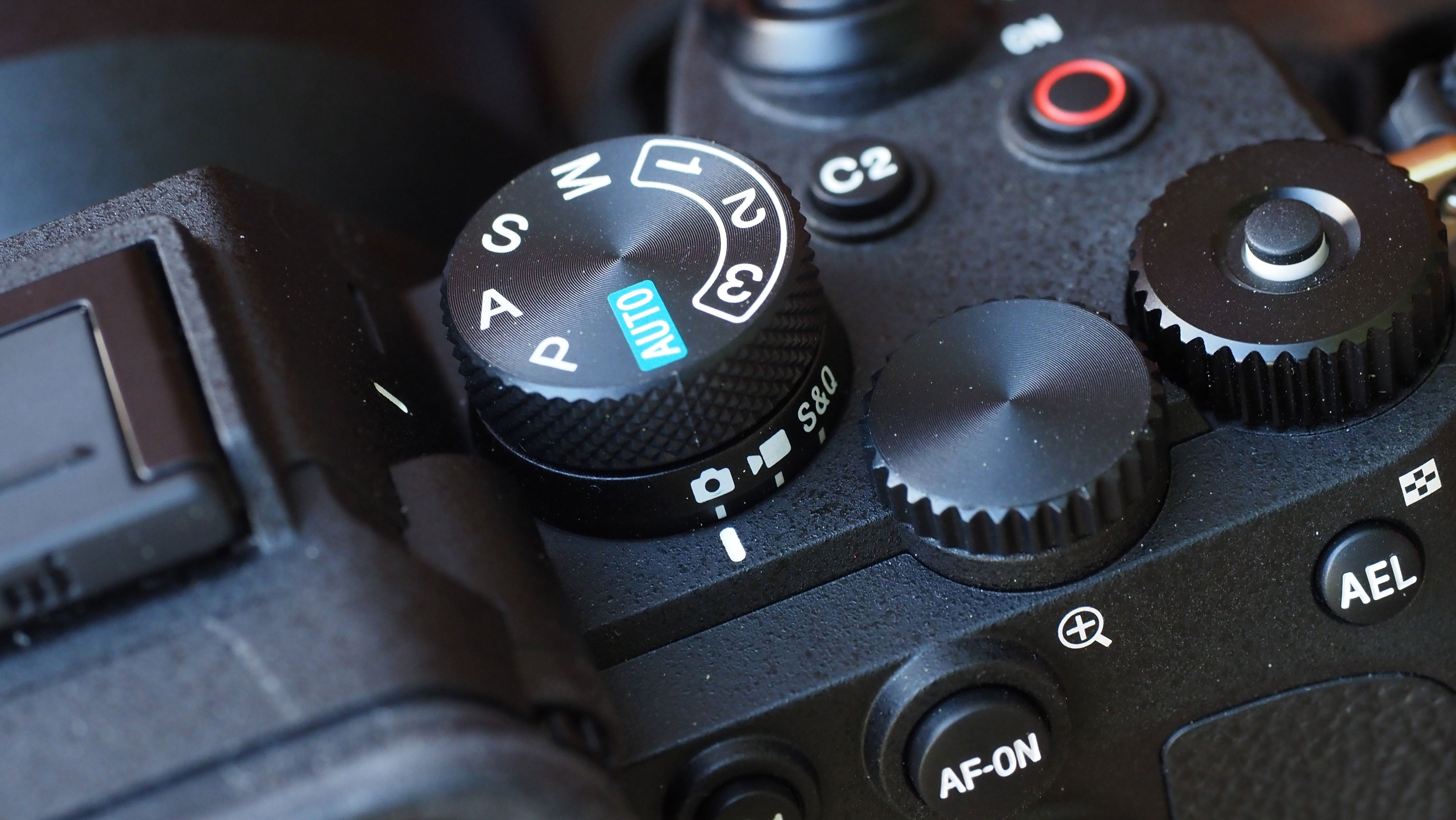
The Sony A7 IV is clearly part of the Sony A7 family, but with the chunky handling and bigger grip of the A7S III. The top plate looks relatively uncluttered for such a sophisticated camera, with no controls at all to the left of the viewfinder housing.
To the right is the main mode dial (with a Still/Video/S&Q dial stacked underneath, two control dials, a Record button and a C2 custom button. It sounds a lot, but everything is well spaced and accessible.
There’s quite a lot going on around the back of the camera too, but again, all the controls are pretty well spaced, with room for a multi-controller that also acts as a dial, an AF joystick and six buttons, including C1 and C4 function buttons, an AF-ON button and an Fn button for calling up a quick settings screen.
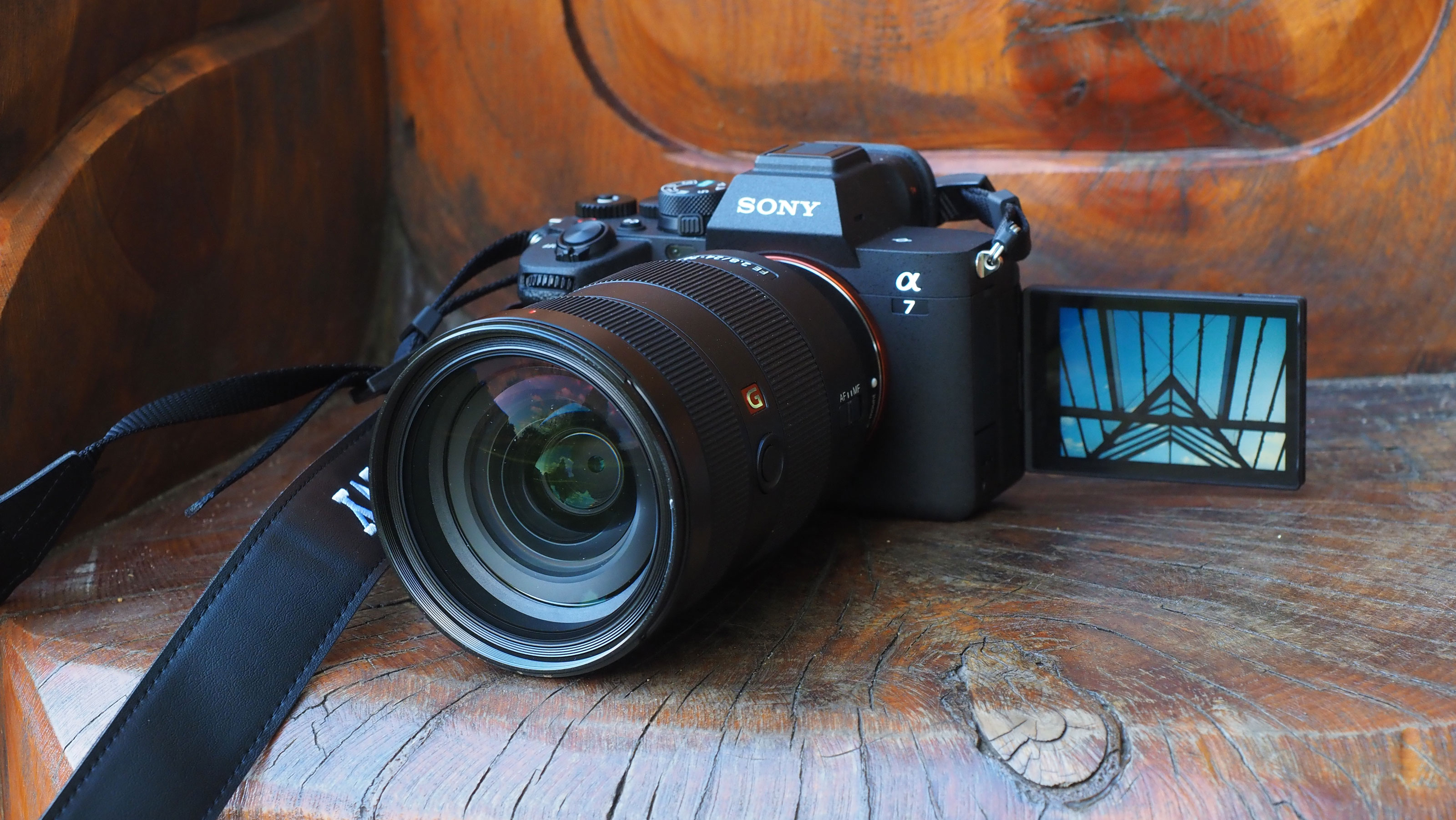
The vari-angle LCD screen is another big step forward from the A7 IV, which only has a tilting screen – but what’s made Sony so mean with its LCD screens? Even the A7 IV has to make do with a 3-inch screen with just 1.04m dots, where rival cameras have bigger 3.2-inch screens and/or twice the resolution.
There’s a further control dial at the front of the grip to bring the total to four. Add in all the custom buttons and you’ve got a camera that can be set up just about any way you want.
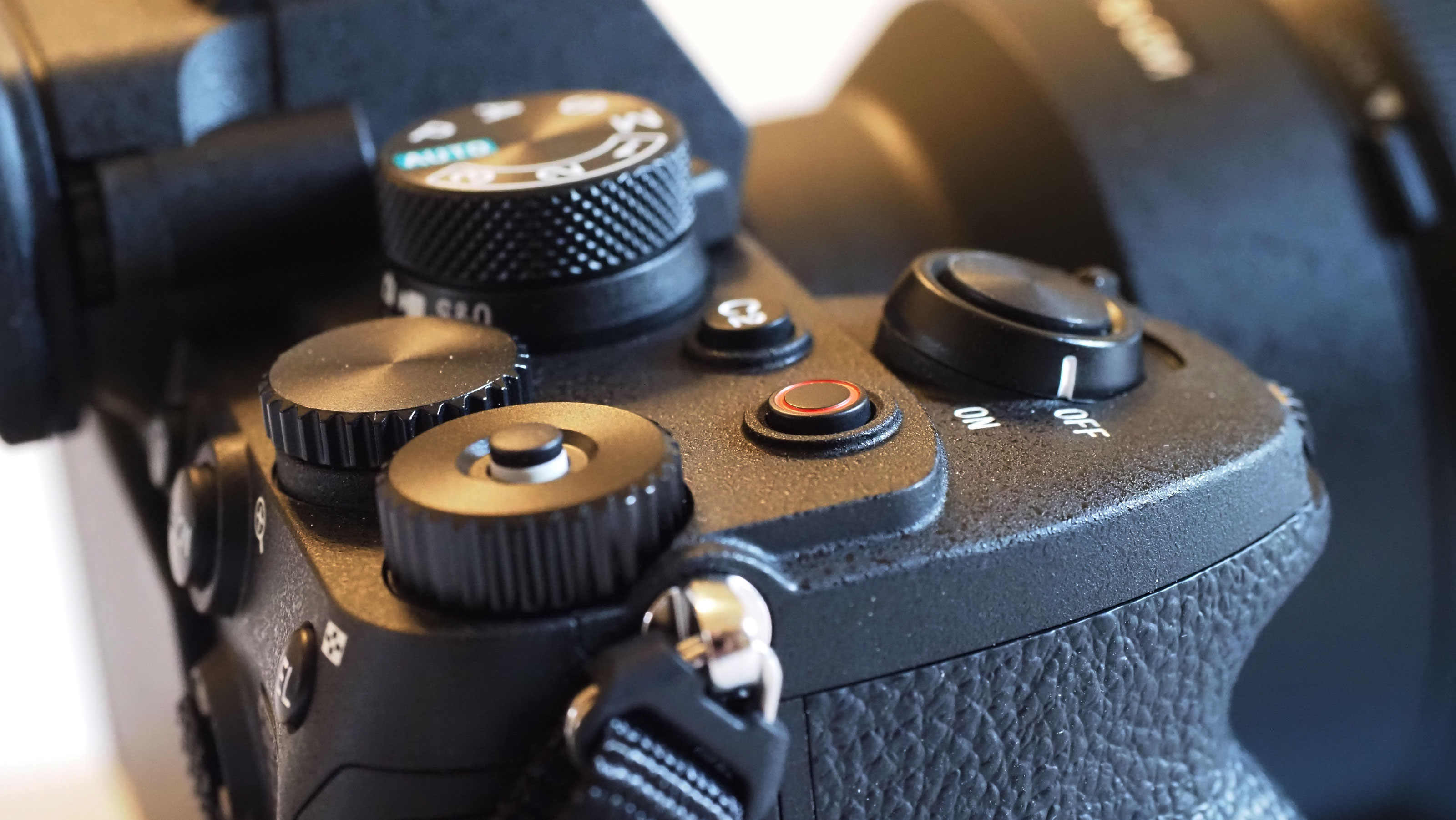
However, all this power and control brings complexity. The matrix of codecs, frame rates, resolutions and crops makes the video settings highly complex, especially if you're using a slower memory card, which will bring its own limits. Sony's video formats include XAVC S, XAVC HS, XAVC S-I... so if you're new to the brand you will have to do your own bit of jargon decoding to work out what you need.
If you shoot video with this camera all the time, you’ll soon have it eating out of the palm of your hand, but if you’re a once-a-month video dabbler, you’re going to have to put some time in learning exactly what’s what, and where it is.
The crop factors are another thing. If you want to shoot 4K 60p, the camera switches to a Super35 crop (roughly APS-C) to do it, and – annoyingly – it also crops in when you switch from regular video mode to the S&Q mode. So you can't just switch over to grab a bit of fast or slow-motion footage because your framing will change. Ultimately, you could just switch to Super35 mode from the outset to avoid these mid-shoot crop changes, but then you lose the advantage of full-width capture.
The A7 IV is a very powerful video tool, but it has its limitations and you will need to remember them.
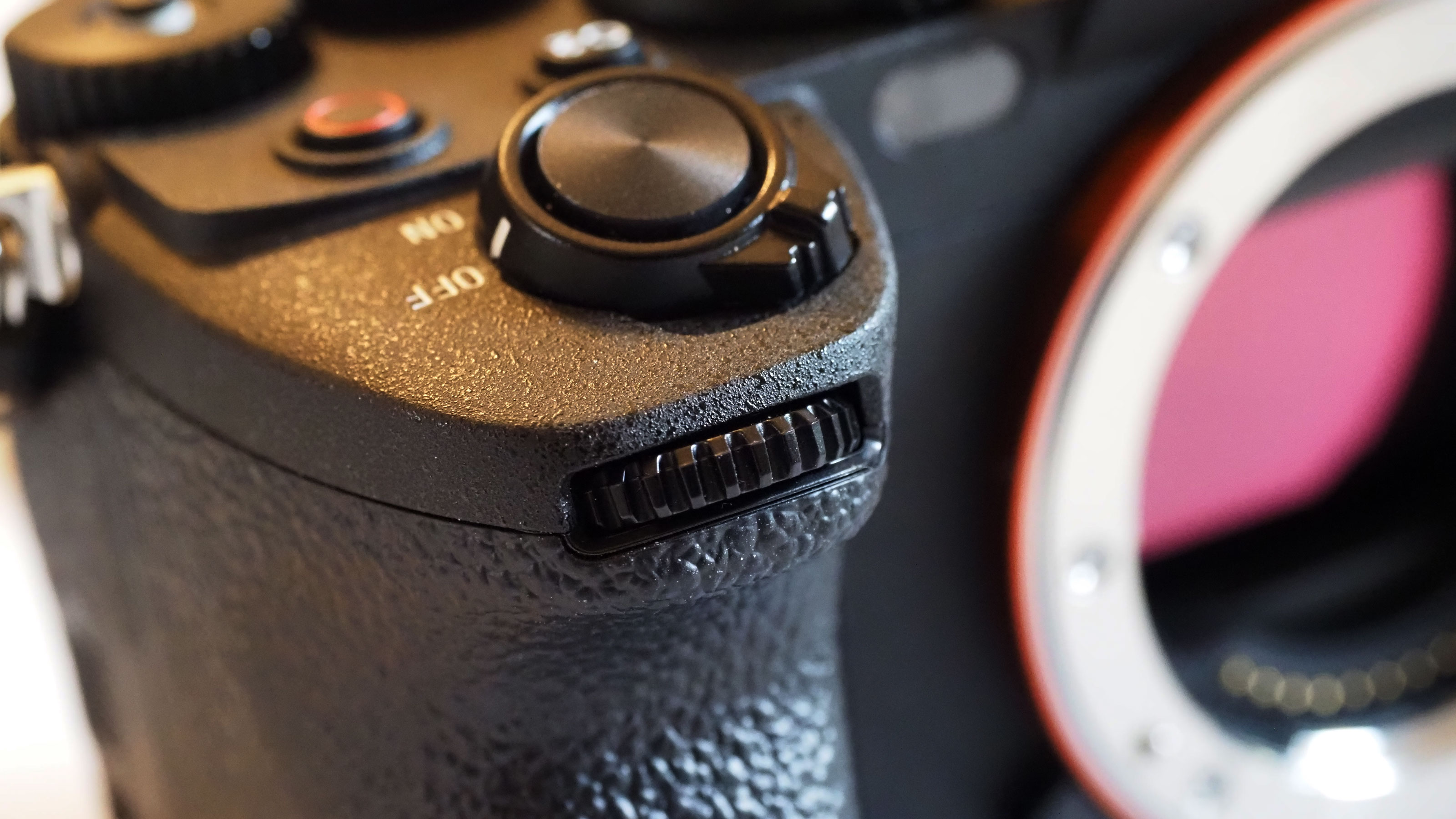
The autofocus looks complex initially, but proves very straightforward to use. Sony’s eye AF and Real-time Tracking truly are excellent, and they just work brilliantly. Likewise the AF tracking, which is activated by a tap on the screen and sticks to your subject like glue.
This is not a beginner camera, however. There is a lot of co-dependency between the camera settings and features. In order to do one thing, often you have to go somewhere else and do another thing first. Experienced shooters will learn it soon enough, though, especially if they've moved up from another Sony.
Performance



The still image quality is quite superb. If you want better than this you'll need to step up to a 40-60MP camera, and you won't get the A7 IV's video features if you do. Quite apart from the outright resolution, the A7 IV produces excellent color rendition in its JPEGs. Sony says its color rendition is improved over that of the A7 III, and while these things are hard to measure scientifically, the A7 IV’s JPEGs do look very good indeed.
The video is oversampled from 7K down to 4K (the A7 III uses oversampled 6K). In theory, the A7 IV’s video should be sharper, if only imperceptibly. Played back full screen on a 4K monitor, our sample footage looked pretty spectacular.



We’re not so convinced about the A7 IV’s stabilization, though. Sony claims a 5.5 stop shake advantage, compared to 5 stops for the A7 III, and the A7 IV adds Active Mode digital stabilization with a slight crop for even steadier footage – as found on the Sony A1, for example.
But while our A7 IV steadied up perfectly for relatively static shots, it did seem pretty poor at run-and-gun style camera movements (or even walk-and-gun). Video pros will almost certainly shoot with more skill and smoothness than a photography journalist (ahem) but even so, we’d recommend you don’t pack away that gimbal just yet.
We’ve no such complaints about the autofocus. The eye AF is just uncannily good, and Sony’s remarks about fast refocusing are justified.
Lab results
For our lab data comparison, we compared the Sony a7 IV to its main full-frame mirrorless rival cameras at a similar price point: the Canon EOS R6, Nikon Z6 II, and Panasonic Lumix S5.
Resolution:
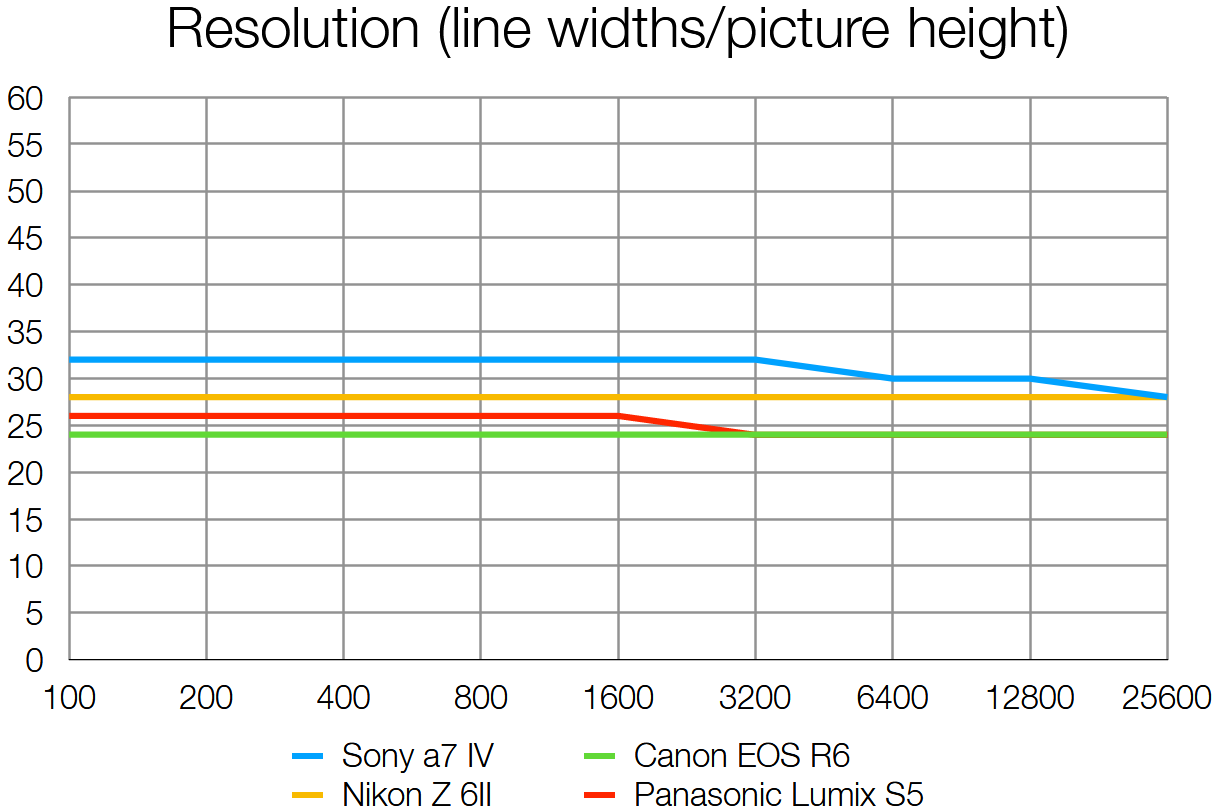
Resolution is measured using standardized text charts which give results in line widths / picture height, which is independent of sensor size.
Here we can clearly see the advantage of Sony's new 33MP sensor versus the lower-resolution competition. Only the 24MP Nikon Z 6II can get close, and only at high ISO sensitivities. However, the extra resolution does mean some compromises....
Dynamic range:
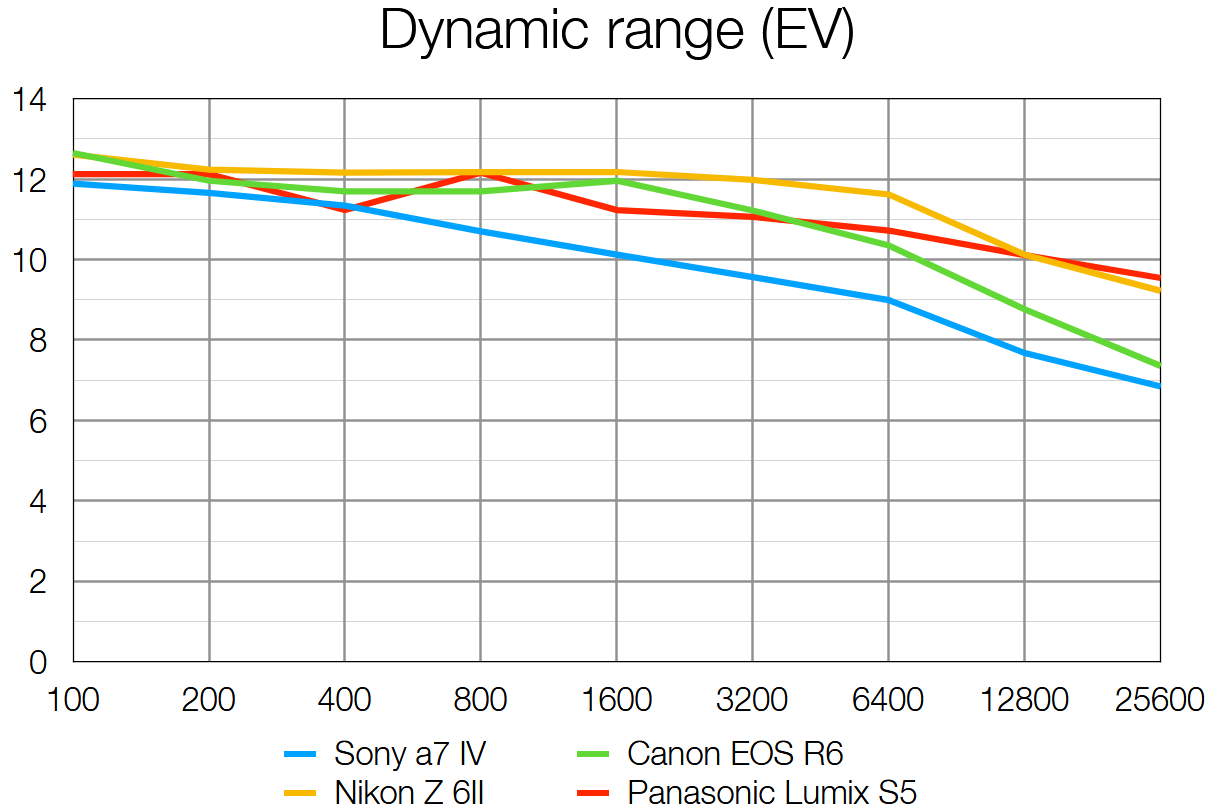
Dynamic range is a measure of a camera's ability to record extreme brightness ranges and still retain detail in the brightest and darkest parts of the scene. It's measured in EV (exposure values, or 'stops').
The first compromise with the A7 IV is dynamic range, which is noticeably weaker than the competition once you exceed ISO 400. It's worth noting that Sony's DRO dynamic range enhance is disabled for this test, but then so too are the competing enhancement systems in the rival cameras on test.
Signal to noise ratio:
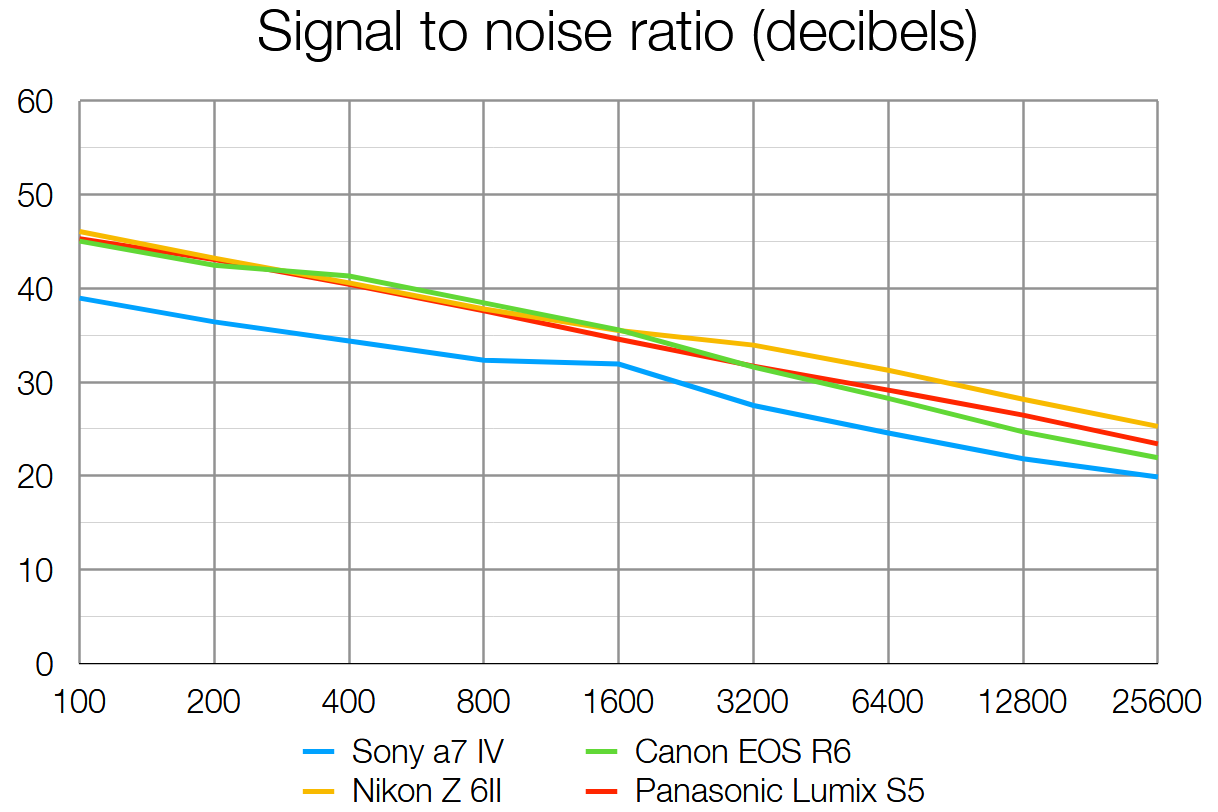
This test compares the amount of random noise generated by the camera at different ISO settings as a proportion of the actual image information (the 'signal'). Higher values are better and we expect to see the signal to ratio fall as the ISO is increased.
The a7 IV's raw files appear a little noisy to the naked eye, which explains why the Sony can't quite match the scores from the Canon, Nikon and Panasonic cameras in this test. To a degree we would expect this – all other things being equal, more megapixels means smaller photosites which means more noise.
Verdict

The Sony A7 IV is an extremely powerful, extremely advanced camera with state of the art autofocus, a huge buffer depth and very good video features. It can also be quite complex to set up and use. The A7 IV makes extraordinary things possible, but it doesn’t necessarily make them easy.
If you come to this camera from another Sony model, you will find its settings and controls a logical extension of what you know already, and its performance and capabilities an absolute revelation.
The still image quality from the 33MP sensor is excellent and visibly better than the 20-24MP rival cameras in this price bracket. The video quality is also very good indeed. However, Sony's image stabilization, even in Active mode, seems to lag behind that of rival cameras, so while it copes very well with static shooting, you'd be unwise to attempt any run-and-gun style filming.
The Sony A7 IV has big shoes to fill as its predecessor, the A7 III, is/was a terrific all-rounder. It is better than the A7 III in just about every respect – however, given current A7 III prices, the A7 IV is also considerably more expensive.
The Sony A7 IV is due for release in December 2021, but you can pre-order it now. Given current camera stock and supply issues, getting in early may be the best chance of getting this new camera. Just saying!
• Pre-order the Sony A7 IV at B&H
• Pre-order the Sony A7 IV at Adorama
• Pre-order the Sony A7 IV at Wex
• Pre-order the Sony A7 IV at Park Cameras
Read more
Best Sony lenses
Best Sony cameras
Best Sony flashguns

Rod is an independent photography journalist and editor, and a long-standing Digital Camera World contributor, having previously worked as DCW's Group Reviews editor. Before that he has been technique editor on N-Photo, Head of Testing for the photography division and Camera Channel editor on TechRadar, as well as contributing to many other publications. He has been writing about photography technique, photo editing and digital cameras since they first appeared, and before that began his career writing about film photography. He has used and reviewed practically every interchangeable lens camera launched in the past 20 years, from entry-level DSLRs to medium format cameras, together with lenses, tripods, gimbals, light meters, camera bags and more. Rod has his own camera gear blog at fotovolo.com but also writes about photo-editing applications and techniques at lifeafterphotoshop.com
